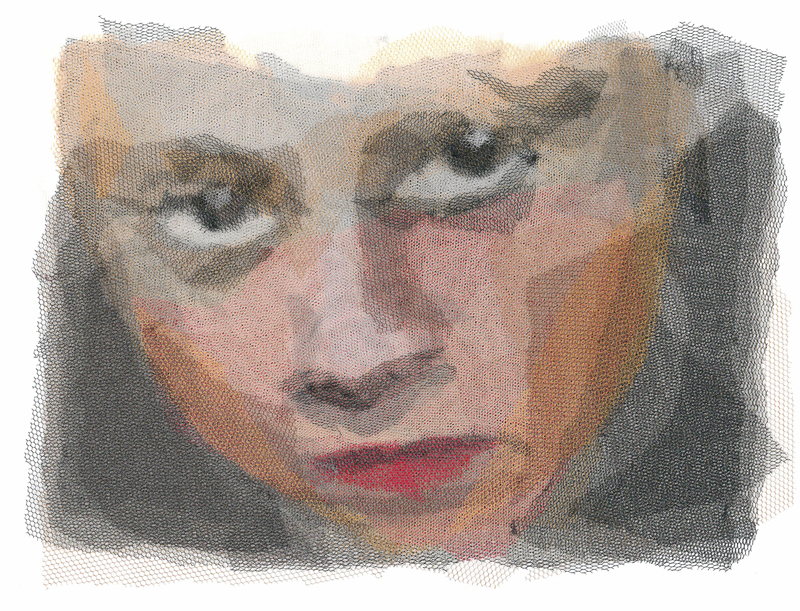
Die aktuelle 6. Europäische Quilt-Triennale, die von 13 September 2015 bis 10 Januar 2016 im Textilmuseum Max Berk in Heidelberg stattfindet, zeigt Werke von 45 Künstlern aus 10 europäischen Länder. Es hatten sich 136 Künstler aus 21 Ländern beworben, die meisten davon aus Deutschland (58), der Schweiz (24), Großbritannien (13) und Frankreich (8). Dass die Bewerberzahl in früheren Jahren höher war ist ein Phänomen, unter dem fast alle Quilt- und Textilkunstveranstaltungen zur Zeit zu leiden haben. Das neue Interesse an der Textilkunst seitens der freien Kunst* hat sich hier noch nicht bemerkbar gemacht.
Die Jury war international besetzt und beriet über mehrere Tage, ein Luxus der nicht von allen Veranstaltern angeboten werden kann. Ein Grund an einer Jury teilzunehmen ist für mich der Wunsch, das jeweilige Fachgebiet besser kennen zu lernen und zu sehen, wohin diese Kunstgattung sich entwickelt. Nichts ist dazu besser geeignet als eine solche internationale Zusammenkunft in freundschaftlicher Atmosphäre, wie sie in Heidelberg stattfand!
Die Themen, die auf dieser Triennale gezeigt werden, sind eher sanft und meditativ, beinahe nie provozierend oder herausfordernd. Leise Töne herrschen vor. Kritik, sei es am Finanzwesen, an der Umweltzerstörung, an der Macht der Medien, oder an der Schnelllebigkeit unserer Zeit, wird schön verpackt dargeboten. Ein gutes Beispiel dafür ist die Arbeit “Luftschloss” der Preisträgerin Susanne Klinke. Was auf den ersten Blick nach märchenhaftem Gebilde aussieht, entpuppt sich bei näherem Hinsehen als Kritik der Jüngeren am Tun der Alten. Auch “Yesterdays´s News” von Jette Clover ist vordergründig nur schön und gut gemacht, enthüllt ihre Kritik erst auf den zweiten Blick.
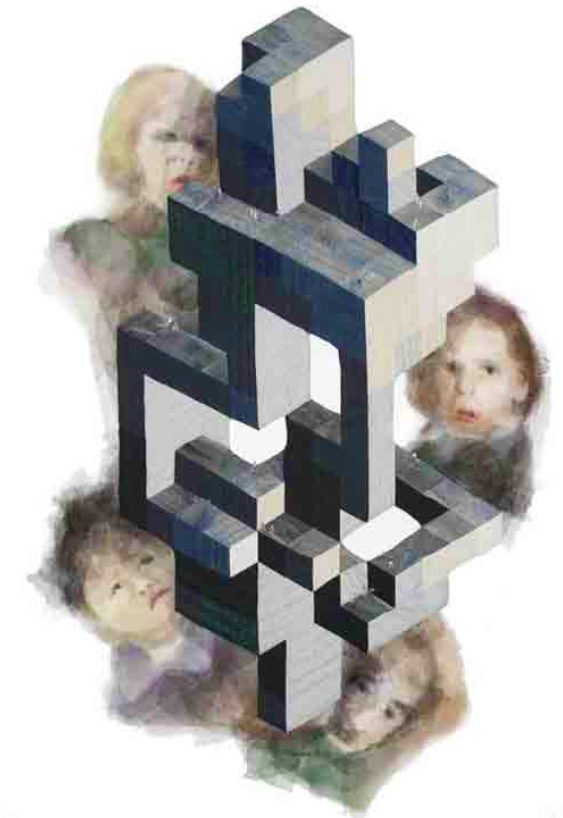

Geschichtliche Themen kommen mehrfach vor, sei es zur eigenen Person oder Familie oder in Bezug auf benachteiligte Gruppen von – zumeist weiblichen – Personen, schließlich sind über 90 % der Quiltkünstler weiblich. Ann Fleeton aus Irland ruft in ihrer Arbeit “Remembering the Magdalens” die Frauen ins Gedächtnis, die wegen ihres sogenannten unmoralischen Lebenswandels zur Zwangsarbeit in einer Wäscherei verurteilt wurden. Dieser Quilt ist mit sehr vielen alten Techniken, die man gemeinhin als Fleißarbeit versteht, versehen und wirkt dadurch umso eindringlicher. Gabi Mett aus Deutschland hat ein ähnliches Thema mit der Arbeit “Erzählt mit eure Geschichten” aufgegriffen, wobei sie die Verkaufstüten für Schablonen zur Wäschekennzeichnung benutzt hat.
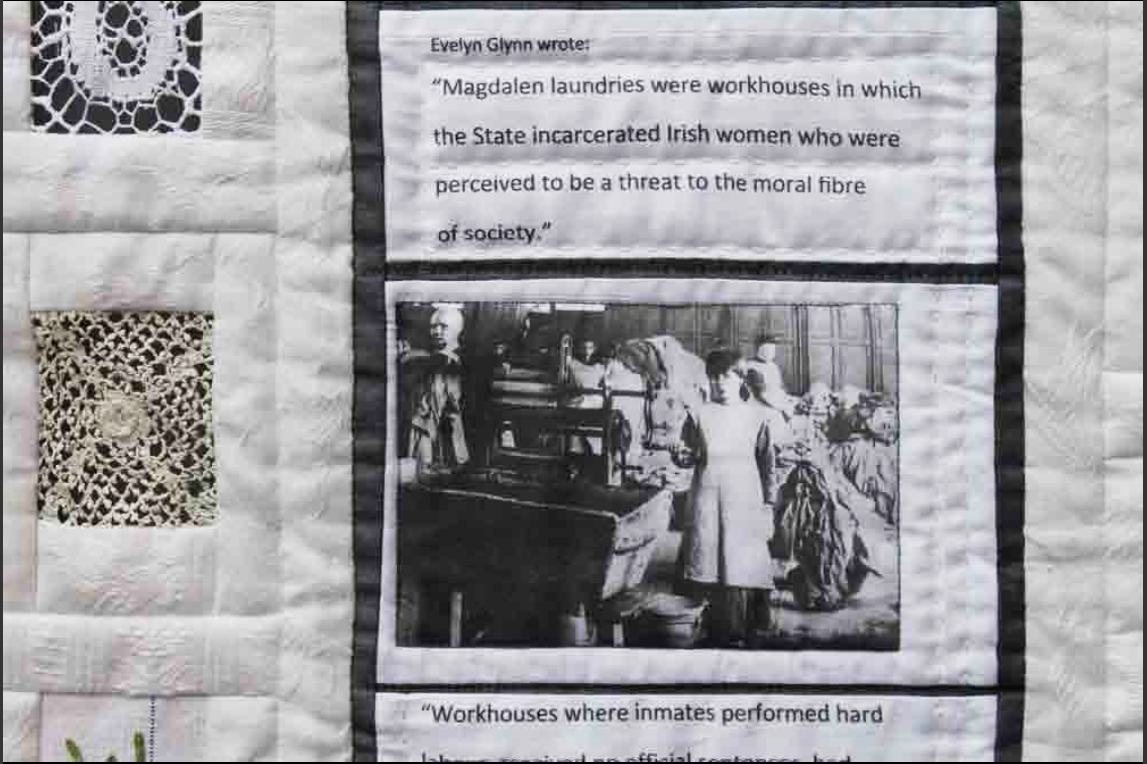
Sehr viel Blumen, Pflanzen, Gärten und jahreszeitliche Themen, die das Klischée der Hausfrauenkunst hervorrufen könnten, entpuppen sich bei näherer Betrachtung als Umweltkritik wie bei der Arbeit “High Water” von Cas Holmes, das von der Verletzlichkeit unserer Küsten handelt, oder als Ausdruck purer Freude an der Gestaltung. Ganz und gar perfekt und dabei unprätentiös empfand ich die Arbeiten “Yellow Mellow” von Elisabeth Brimelow sowie “High Summer” von Janet Twinn. Warum setzt die Textilindustrie solch wunderbare Gestaltungen nicht ein, warum ist die Quiltkunst ein fast unbekanntes Refugium geblieben?
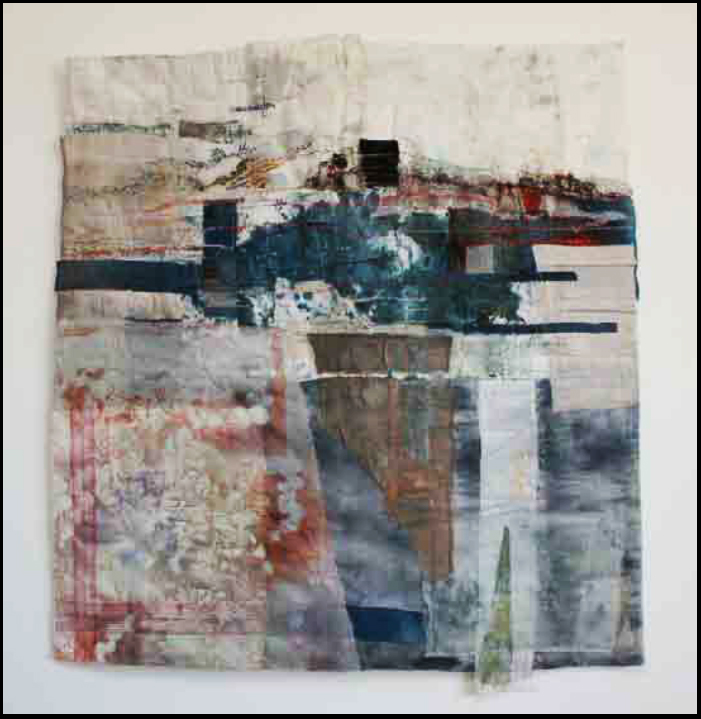
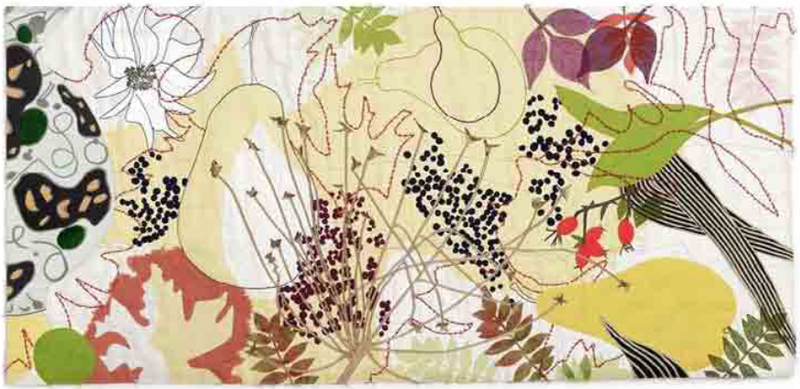
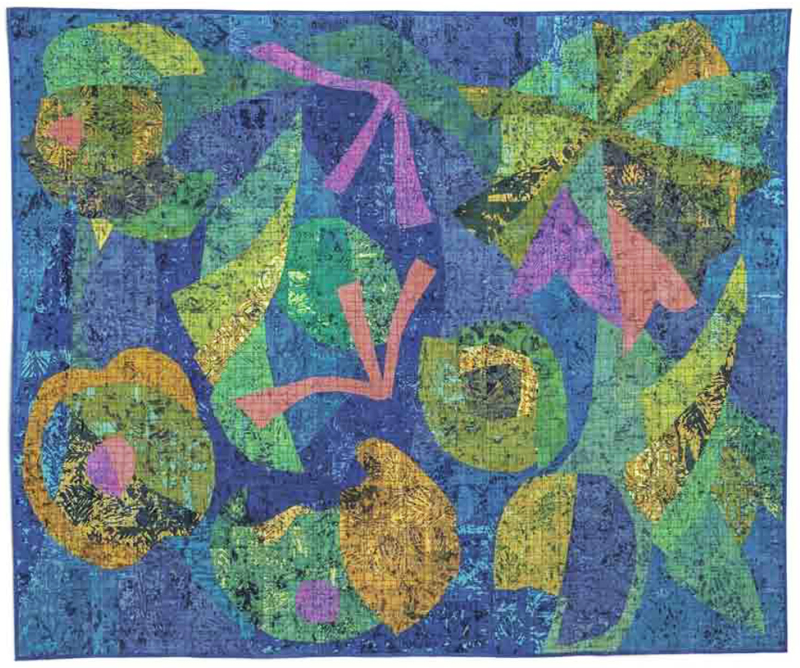
Vielfach wird die Malerei als Inspiration genommen wie bei der Arbeit “All is Color” von Solange Lasbleis aus Frankreich oder der sehr dicht am Original verbliebene Quilt “Zeichen in Gelb” von Ramona Conconi aus der Schweiz (nach Paul Klee). Eine umgesetzte Cartoon-Zeichnung mit dem Titel “Catwalk” bietet Gabriele Schneider aus Deutschland, laut und frech. Ebenfalls aus dem Rahmen fällt Helen Conway aus Großbritannien mit der Graffiti-inspirierten Arbeit “Note to self”.
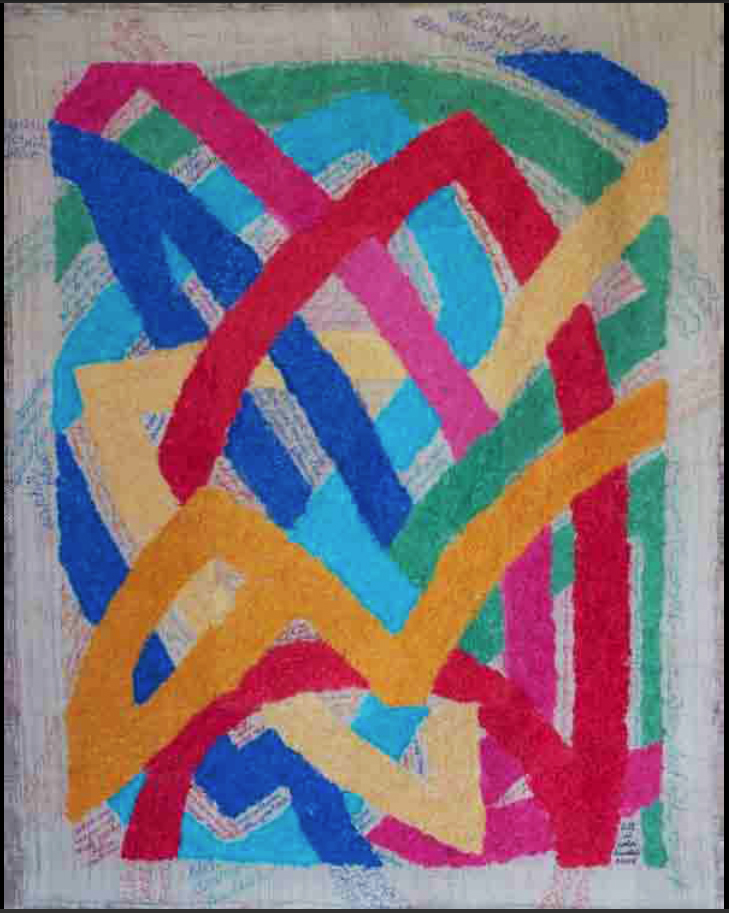
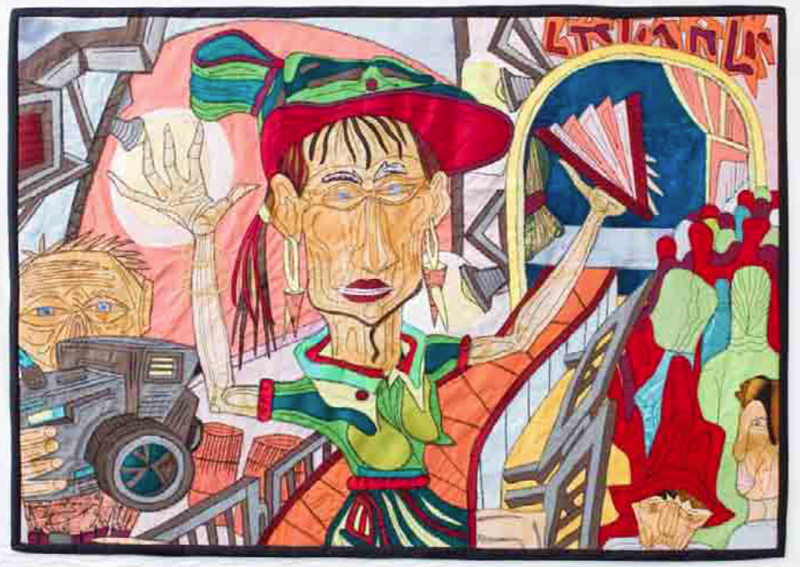
Das Spiel mit Linien, Flächen und Farben kommt in der Quiltkunst naturgemäß häufig vor, so auch in dieser Ausstellung. Einige überzeugende Beispiele dafür waren “Pluie Coloré” von Edith Raymond, “Reflets de la lune sur l´ocean” von Gabrielle Paquin, beide aus Frankreich, sowie “Seascape” von Inge Hueber aus Deutschland.

Eine Künstlerin nahm die Quiltkunst und ihren Stellenwert zum Thema: “Marginal Activity” von Marita Lappalainen aus Finnland. Ihr Wandbehang ist in der Mitte leer, die Künstlerin hat die Gestaltung auf den Randbereich verlegt.”Is contemporary art a marginal activity?” und “How is contemporary quilt art appreciated in the public eye?” sind Fragen der Künstlerin.
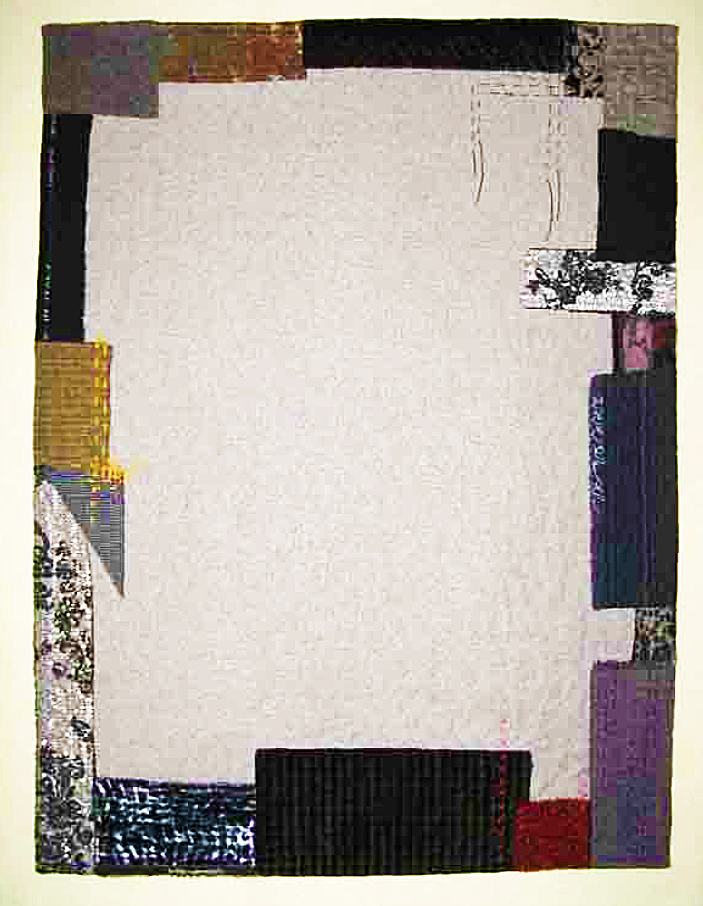
Die Techniken, die eingesetzt wurden, sind teilweise sehr raffiniert und beeindruckend wie bei der Arbeit “Struktur und Raum” von Urte Hanke, die damit den Preis für Innovation im Großen Format gewann: “Ich erforsche komplexe Strukturen in ihrem Verhalten zum Raum” sagt sie zu ihrer sehr überzeugend bemalten und gequilteten Arbeit. Auch die oben erwähnte Arbeit “Luftschloss” der Preisträgerin Susanne Klinke fiel durch die perfekt eingesetzten Techniken auf. Ich kenne sie als Stickkünstlerin und war begeistert von der neuartigen Gestaltung der Gesichter durch die Schichtung farbiger Tüllstoffe.
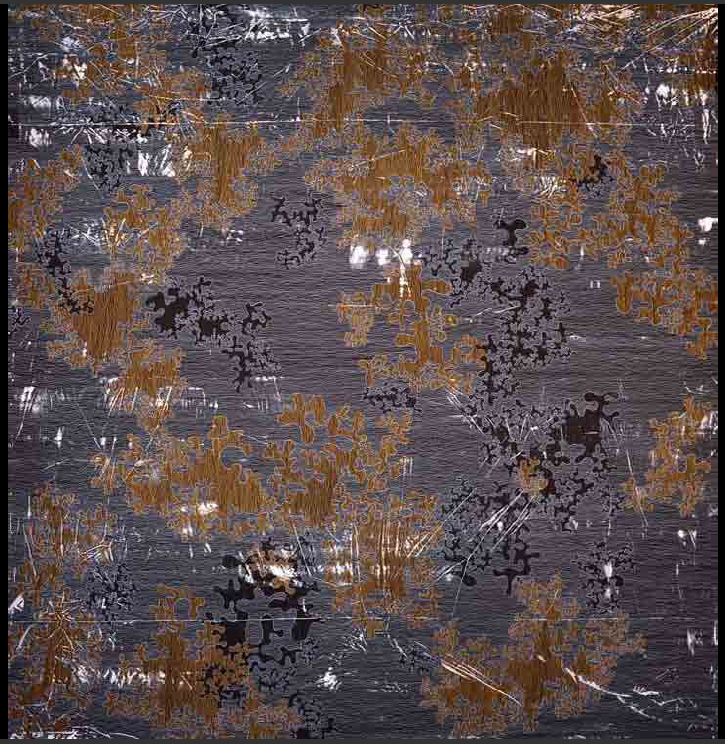
In der modernen Kunst heißt es oft, dass die Technik unwichtig sei; das gilt nicht für die Quiltkunst, denn hier trägt die Technik eine ganze Menge zur Wertschätzung bei: So zum Beispiel bei der mühelos und luftig wirkenden Gestaltung “Abschied mit kleinen Stichen” von Rosa Dames, die mit einer meisterlichen Beherrschung des Mediums Quilts gestaltet ist. Schon die Fernwirkung ist wunderbar, aber auch die Betrachtung im Detail offenbart technische Feinheiten, die diesen Quilt zu etwas Besonderem machen.
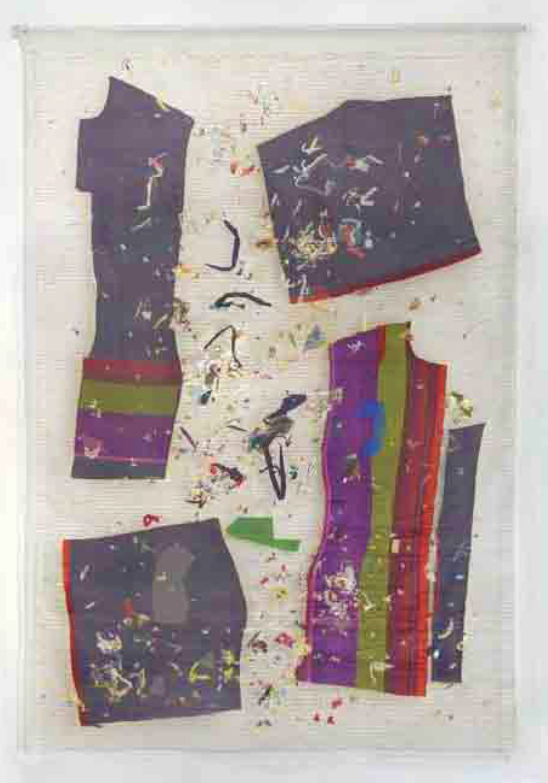
Wie geht es nun weiter mit der Quiltkunst, hat doch diese 6. Triennale wieder bewiesen, wie unerschöpflich das Medium ist. Geben wir uns damit ab, dass die Veranstaltungen zunehmen, die Bewerberzahlen hingegen abnehmen, ohne dass eine angemessene öffentliche Wertschätzung in Europa erreicht worden ist? Auch sind die Teilnehmer zumeist nicht die Jüngsten, Grund dafür, dass es in Heidelberg einen extra Preis für junge Künstler gibt, der diesmal an Theresa Russow aus Deutschland für ihre Arbeit “Shadow of Flowers” ging.
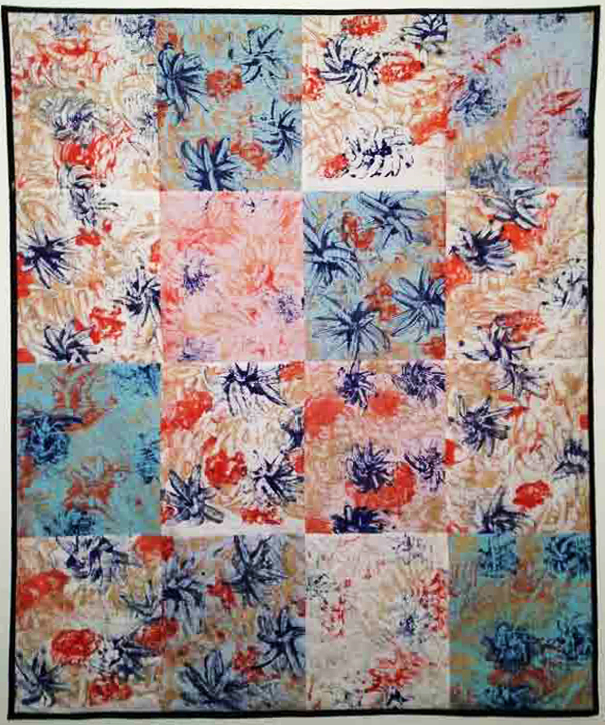
Die Heidelberger Biennalen & Triennalen haben zwischen 1984 und heute geschätzten 1500 Patchwork-/Quiltkünstlern die Gelegenheit geboten sich aneinander zu messen, und den Ausgewählten die Möglichkeit, sich dem Publikum vorzustellen. Das ist der große Verdienst der Initiatorin Doris Winter und ihrer Familie sowie von der jetzigen Kuratorin Dr. Kristine Scherer. Aber kann man immer so weiter machen und in Quiltkunstausschreibungen nach den zwei bis drei Lagen Stoff verlangen, wenn die Künstler sich bereits weiter entwickelt haben? Die Heidelberger Quilt-Triennale fördert bereits solche Innovationen und Grenzüberschreitungen, und gilt als sehr offen (als Voraussetzung zur Teilnahme sind hier zwei Lagen Stoff gefordert). So gibt es in dieser Ausstellung ein dreidimensionales Objekt, das kaum noch an Quilts erinnert: “Crossing Borders: Africa” von Anco Brouwers- Branderhorst aus den Niederlanden, oder Werke mit einem besonderen Format wie die an ein langes Stickmustertuch erinnernde Arbeit “Souvenir de ma jeunesse” von Els van Baarle aus den Niederlanden. Will man konsequent sein, müsste man die Kriterien noch freier definieren, weil die Künstler – vor allem die Jüngeren – ihre Kunst längst nicht mehr entlang der Kategorie Quilt gestalten. Dann wäre es an der Zeit, auch über einen neuen Namen nachdenken (z.B. Doris Winter-Triennale für Textilkunst).
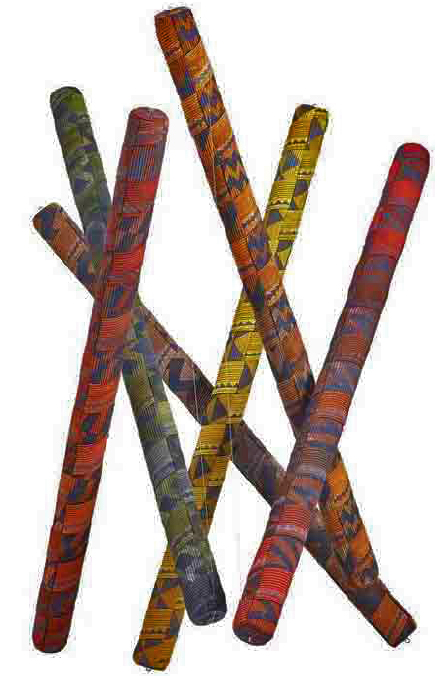
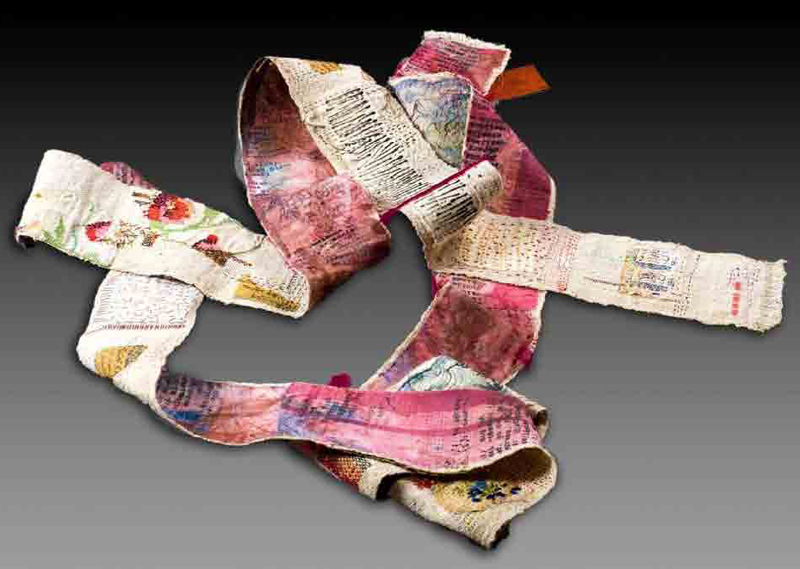
Das anfangs erwähnte neue Interesse seitens der Bildenden Kunst und des Kunstpublikums an Textilkunst bezieht sich zunächst vor allem auf Textilkünstler, die schon lange tot sind (wie zum Beispiel die Tapisserieweberin Hannah Ryggen, die auf der letzten Documenta in Kassel gezeigt wurde) oder auf Künstler, die sich im Dunstkreis der “Freien Kunst” befinden (wie zum Beispiel Rosemarie Trockel). Louise de Bourgeois` Stoffcollagen werden international in Ausstellungen bewundert und in Büchern gezeigt. Es handelt sich dabei um Arbeiten, die bei der Quilt-Triennale nicht einmal besonders aufgefallen wären. Warum nimmt das Publikum solche Arbeiten zur Kenntnis, und warum bleibt die Quiltkunst – zumindest in Europa – eine unbekannte Kunstgattung? In den USA haben es die Quiltkünstler immerhin geschafft, von Kunst-Galerien vertreten zu werden und gute Preise für ihre Werke zu erzielen.
Auch bei den anderen textilen Gebieten wie z.B. bei der Tapisserieweberei, der Jacquardweberei, der Schaftweberei, der Stickerei, der Spitzenkunst und der Filzkunst herrscht ein ähnlicher Mangel an öffentlicher Anerkennung vor. Dieses Missverhältnis zwischen öffentlichem Interesse an Kunst mit Textil und der Realität, wie sie die Textilkünstler erleben, ist in Europa ganz extrem; aus diesem Grund haben z. B. die italienischen Textilkünstler eine große retrospektive Ausstellung in einem wichtigen Museum in Rom veranstaltet, um sich gegenüber der Biennale von Venedig, wo ständig Textiles gezeigt wird, jedoch so gut wie nie von Textilkünstlern, zu Wort zu melden!
Analog dazu müssten auch die Textilkünstler Europas von sich reden machen! Es ist klar, dass jedes textile Gebiet für sich zu klein ist und zu wenig Ressourcen hat, um eine internationale Wanderausstellung zu organisieren; aber ich denke dass alle diese Gruppierungen zusammen eine Kooperation wagen sollten, um gemeinsam die textile Kunst in all ihren Facetten dem Publikum zu zeigen und so die allgemeine Anerkennung zu heben! Nicht anstelle der eigenen Veranstaltung, sondern eher als ein zusätzlicher, gemeinsam veranstalteter, hoch-aufgehängter offener Wettbewerb. Das Ergebnis sollte dann durch die besten Museen in Europa wandern. Der erste Schritt wäre eine Zusammenkunft mehrerer wichtiger Veranstalter, um über die gemeinsame Zukunft nachzudenken. Sonst verpasst man eventuell das neu aufkommende Interesse an Textilkunst, weil jeder in seiner Nische verbleibt.
Wir haben in Europa zwar bereits eine Triennale, die weltweit Aufmerksamkeit erreicht: Die Triennale der Tapisserie in Lodz/Polen, die sich, anders als der Name vermuten lässt, auf die gesamte Textilkunst bezieht. Diese Veranstaltung bietet jedoch den Künstlern bislang keine Möglichkeit sich zu bewerben, da Berater die Kandidaten auswählen und vorschlagen. Eine Neuausrichtung dieser Veranstaltung wäre denkbar, da sich zur Zeit ein Generationswechsel in Lodz vollzieht.
Das Fazit: Es braucht ein gezieltes Vorgehen einiger progressiven Veranstalter, um die Kräfte der Textilkunst in Europa zu bündeln und um aus dem Schatten heraus zu treten. Das Heidelberger Textilmuseum Max Berk, als eine von allen geschätzte wichtige Institution, scheint mir für eine solche Bündelung der Kräfte auf europäischer Ebene offene Ohren und den Willen zu haben, eine neue Wertschätzung der Quilt- und Textilkunst auf den Weg bringen.
Beatrijs Sterk
Hannover 18 Juli 2015
PS die Eröffnung findet am 13 September Vormittags statt!
(*)Siehe zu diesem Thema die Artikel “Kunstaustellungen mit Textil im Dunstkreis der Kunstszene” und “Seit wann tauchen Textilien in der Kunst auf” im Textile-Forum-Blog unter https://www.textile-forum-blog.org/de/2013/12/deutsch-ausstellungen-mit-textil-im-dunstkreis-der-kunstszene/ und https://www.textile-forum-blog.org/de/2014/05/when-was-the-starting-point-of-textiles-in-fine-art-2/